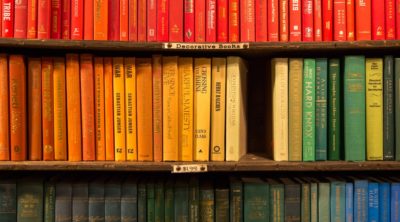
Some people have creative way of doing things, even reading! Let us find out more about it in this Penlighten article.
We are not computers-linked in networks, so we simply cannot absorb all the information into our brain by reading a book or an article on a topic that interests us. Reading is, thus, a rather creative kind of activity. Hence, even classics from Shakespeare or Dostoevsky may have very different interpretations. Literary critics call these interpretations “readings.”
The creative nature of reading does not imply that the reading process is random, depending on the reader’s mood, knowledge, or capacity of perception, but it means that the writer can induce the readers into certain interpretations and can allude to certain meanings in his writings.
The writer has to mind the narrative structure of his book, and give the reader certain clues so that he/she can read it in a proper and creative manner.
Creative Reading
An enormous number of people regard reading as a means of entertainment. But for such people, there is very little to gain. Although it might seem a useful activity, a perfect pastime to choose, reading on the train or on the bus can fool us into believing we are actually reading. Our mind is very likely to wander in this particular situation, so we don’t really get into the writer’s world, or we cannot really retain too many important details.
Most people like reading fiction. That is because well-written fiction books can let us enter a new and exciting world that has charming, interesting characters, which we may relate to. So when we put the book aside, after finishing it, we feel a sort of sadness. The idea is to read so as to remember later what the book was about, to read first and foremost for our very own benefit, and not just to impress others, or to follow someone’s recommendation. A well-known example of such a book would be the Harry Potter series.
Here are the wise words that John F. Genung wrote in his “Practical Elements of Rhetoric”, back in 1894, “While the reader is receptive, while he is being acted upon by what he is reading, he is at the same time origination, vigorously acting on the same subject-matter, shaping it into a new product, according to the color and capacity of his own mind.”
What does this “creative reading” refer to? Or what does it do to us readers? How does it work? At any rate, it is meant to inspire us, to stir our imaginative thoughts, and generate alertness in our minds. Otherwise, we may fall asleep while reading, or forget everything after we’ve read the text. Also, creative reading should help us focus on grammar and style, and how do they help the writer render his message to the readers.
We must discipline our reading. We have to learn and stay focused and alert. Yes, we can choose the things we want to read, though, and read at our very own pace, without any pressure from the outside.
We should also pay great attention to what we’re reading, and avoid looking up words in the dictionary, because this might interrupt our process. Also, when doing creative reading, we should not be interrupted by any outside elements, such as phones, computer messages, and so on. A great idea is to read with paper and pen nearby, and put down everything that may seem of relevance to us, no matter how zany those ideas might appear. Who knows what they might lead to!




